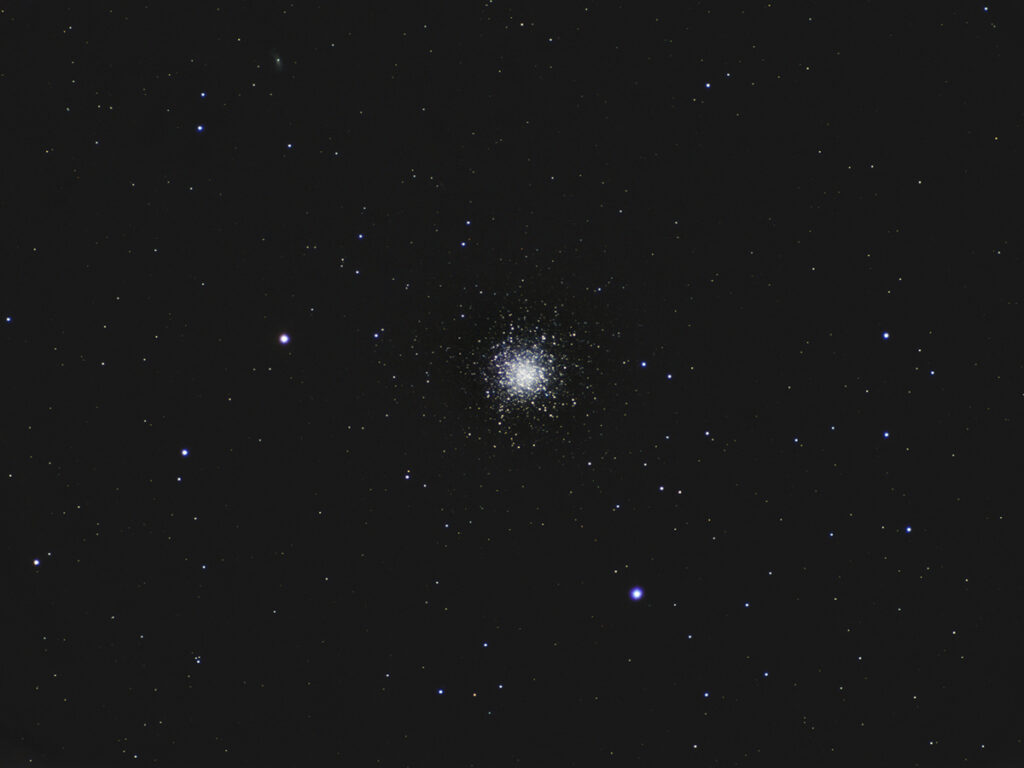
Telescope: Unitron 155 4” f/15 refractor, Atlas EQ-G
Camera: QHY 367c Pro, –20C, GSO IR Blocking Filter
Guide scope: Orion 50mm Guidescope, ASI120MM, PHD
Exposure: 24x300sec, gain 2800, offset 50, saved as FITS, dithered every 2 images
Darks: 32, -20C, gain 2800, offset 50, saved as FITS
Flats: 64×0.5sec, Tee shirt flats taken at dusk
Average Light Pollution: Red zone, Bortle 8, variable transparency
Lensed Sky Quality Meter: 18.3-18.6
Stacking: Average, 1 sigma clip
White Balance: Nebulosity Automatic
Software: SharpCap Pro, Deep Sky Stacker, Nebulosity, Photoshop
This is M13, the Great Cluster in Hercules. If you look carefully you can glimpse the tiny galaxy NGC 6207 (Mv 11.6) in the upper left corner of this field. What appears to be a dust lane drapes to the lower left across the cluster. This is a very unusual feature for a globular cluster and it is not clear if this is actually associated with M13 or simply lies in the line of sight with the cluster.
M13 currently rises in the northeast during the early evening.
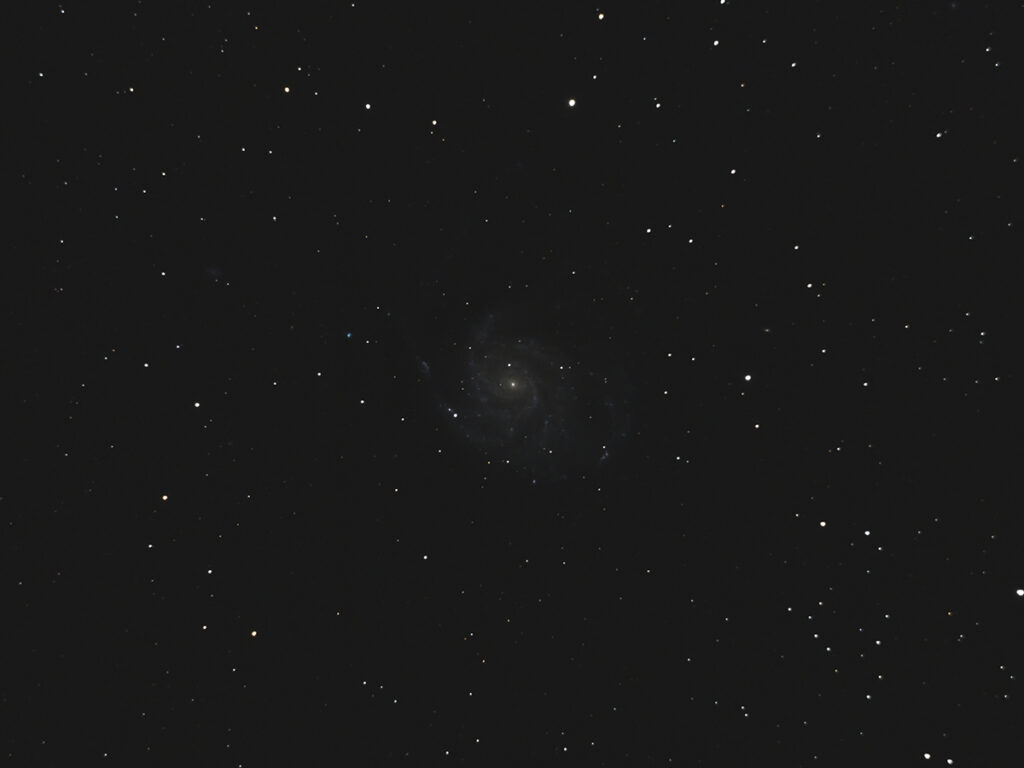
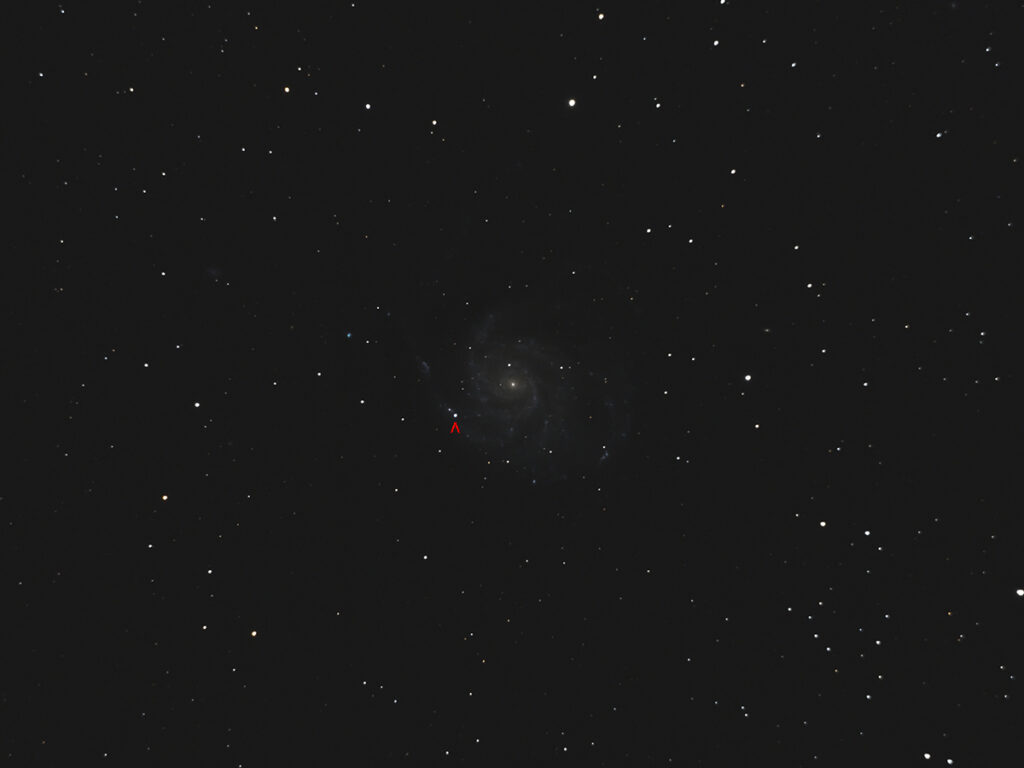

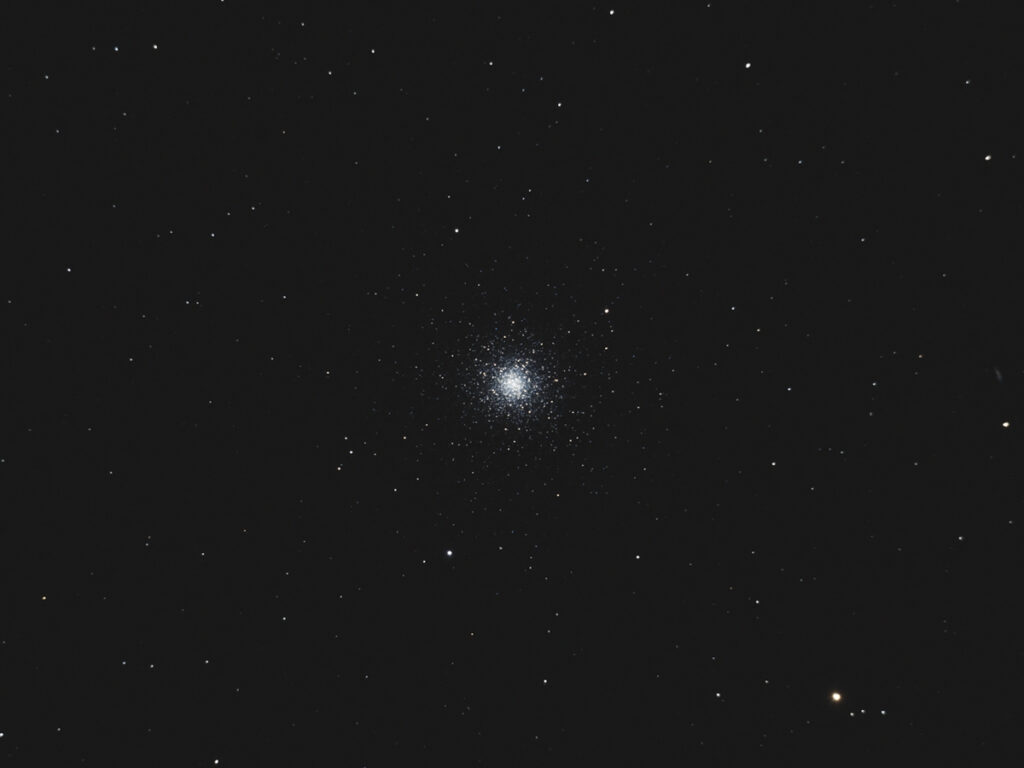
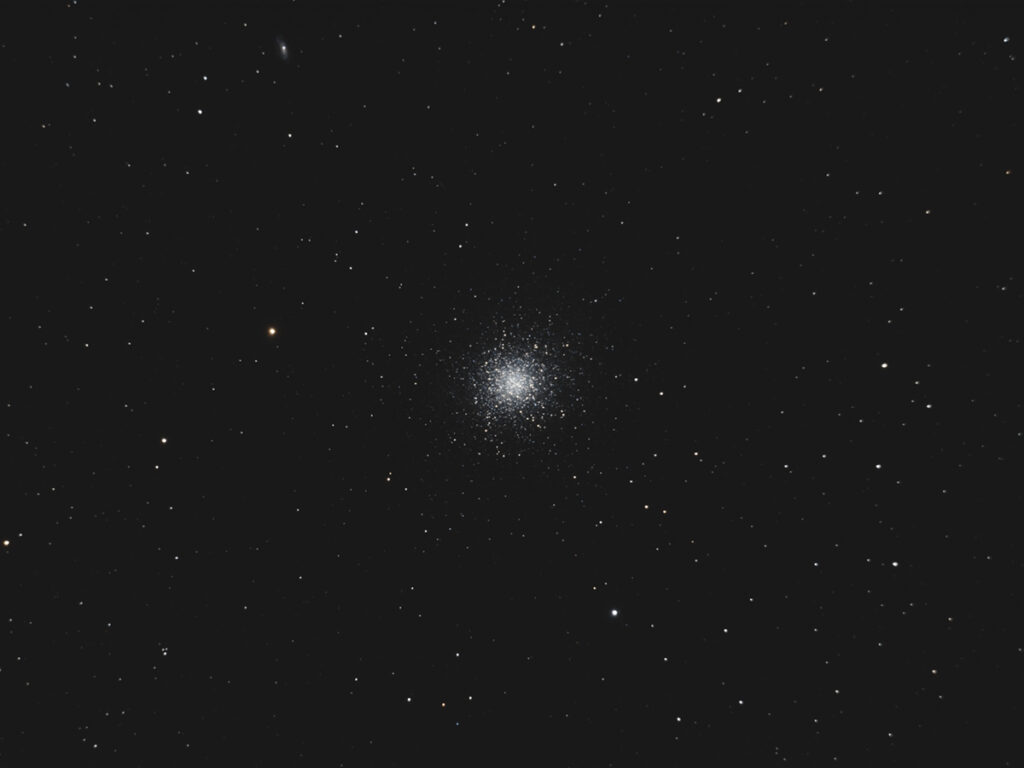
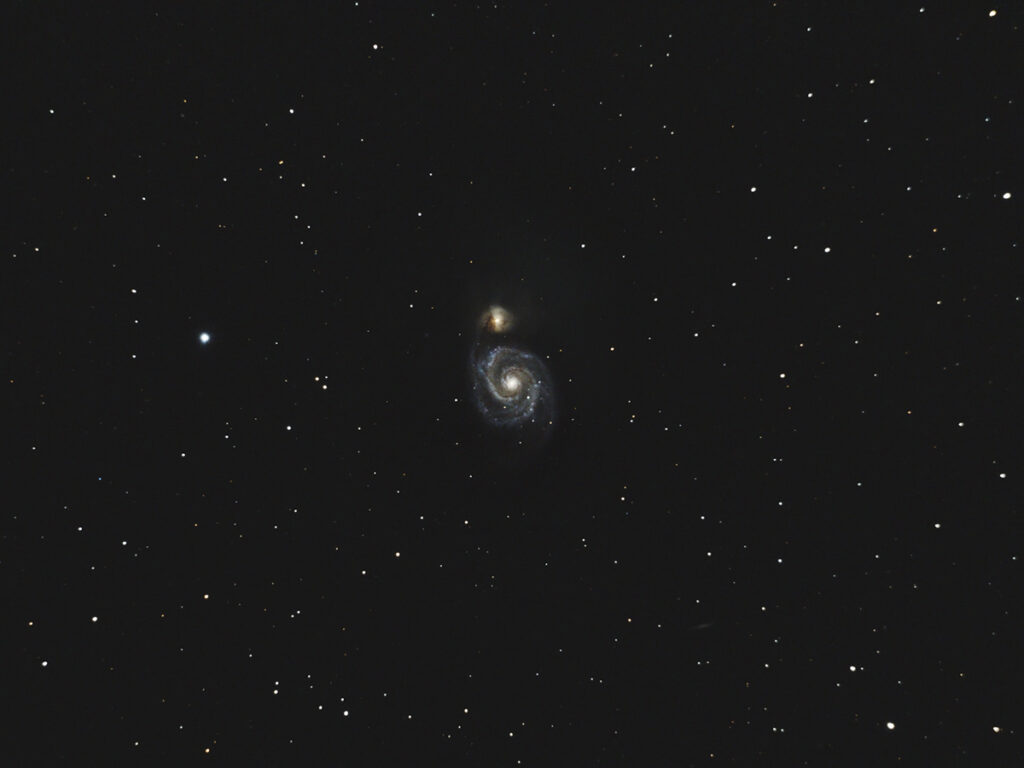
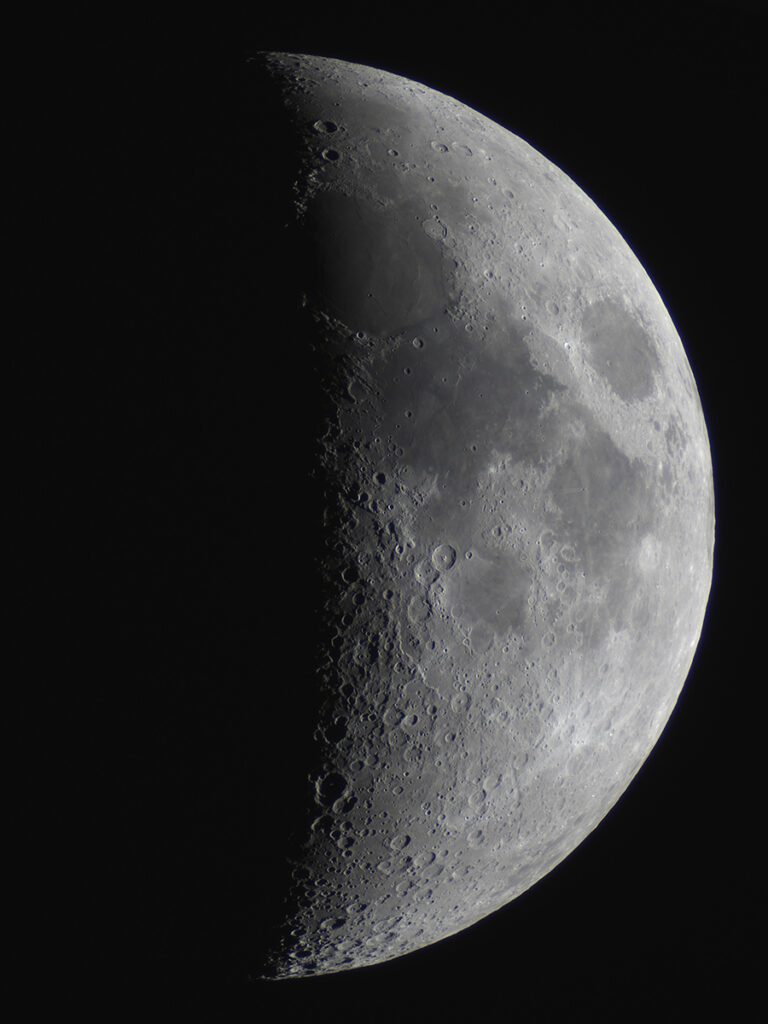
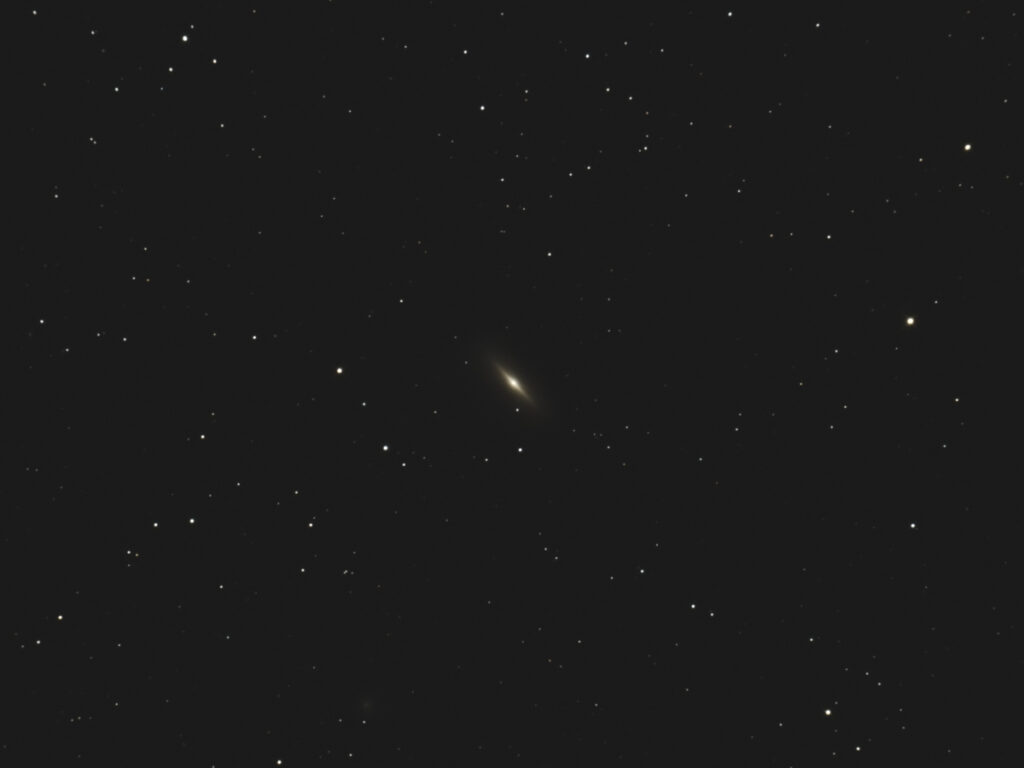
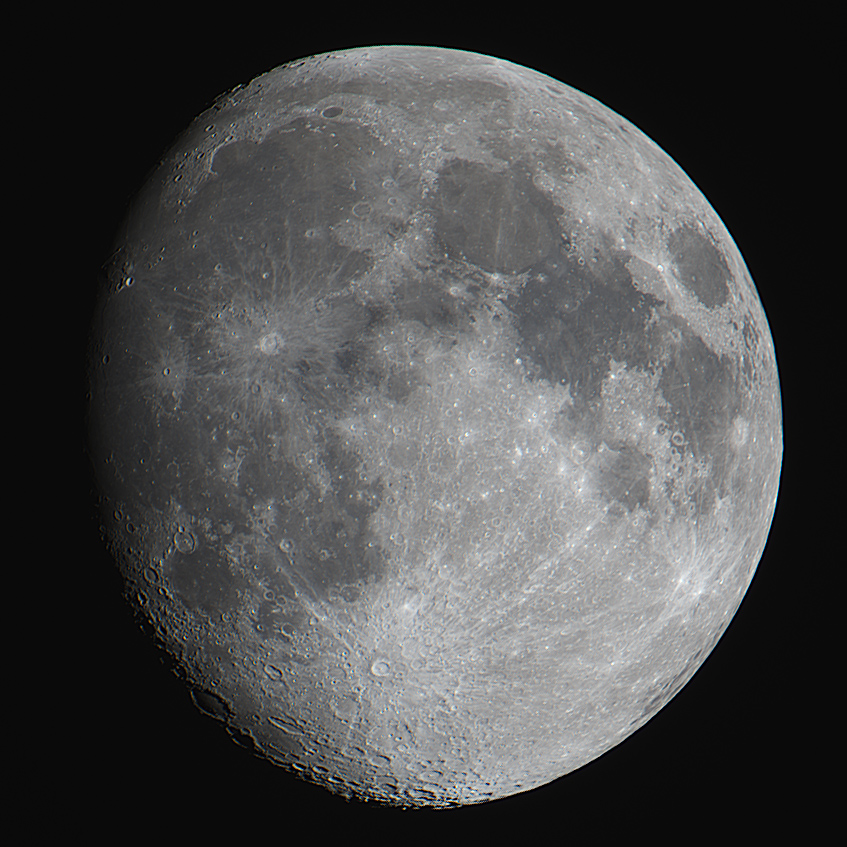
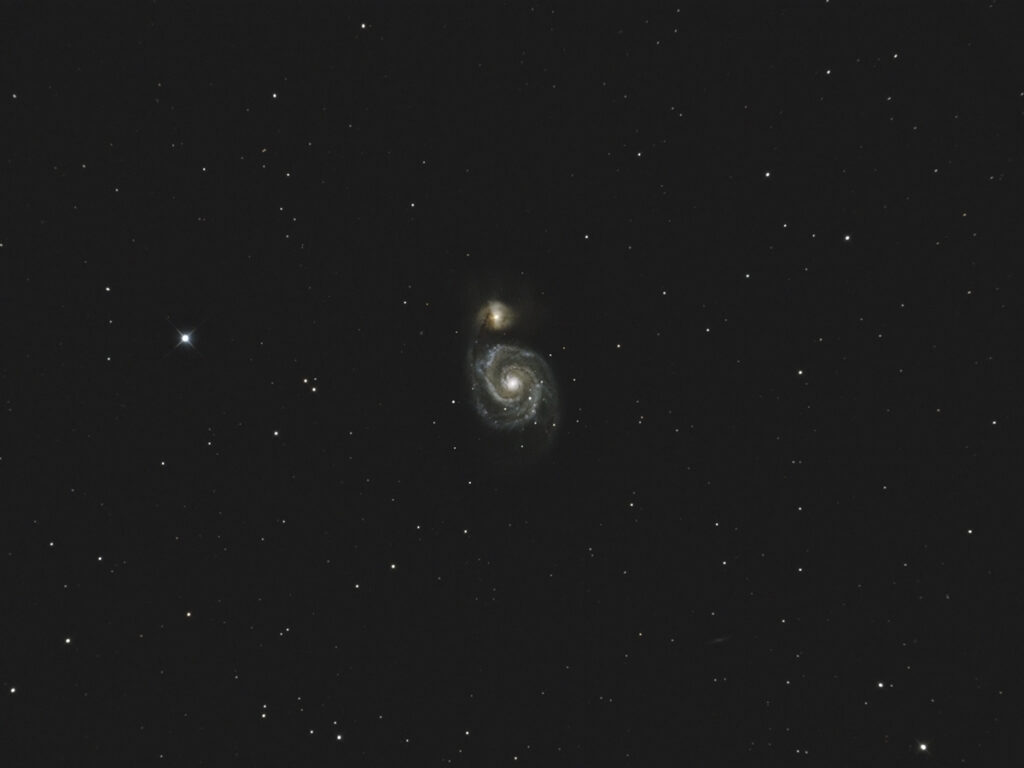
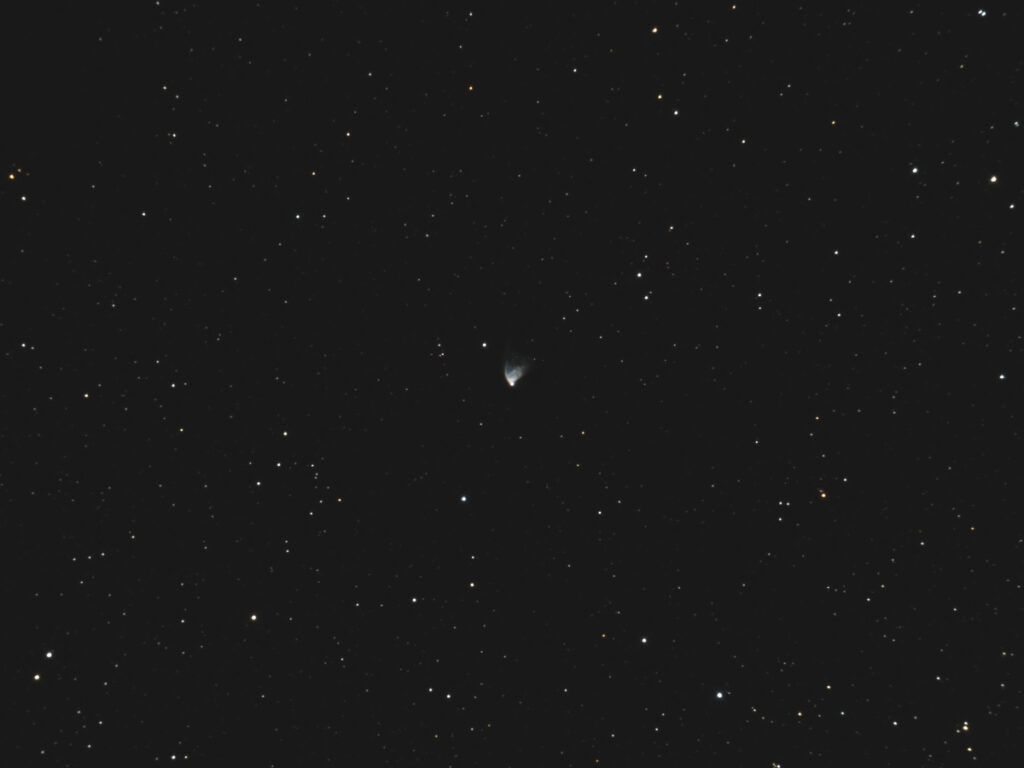
Recent Comments